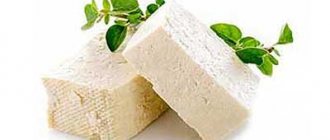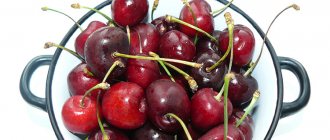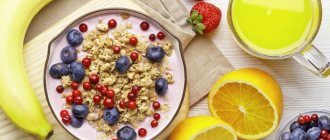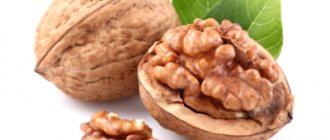Useful information
Both drinks were released by the American company The Coca-Cola : Coca-Cola - in 1886, Sprite - in 1961. In the first of them, 3 parts of coca leaves and 1 part of tropical cola nuts were mixed. Coolants were originally made from artesian water mixed with carbon dioxide and citric acid. That's why they were called sodas and lemonades.
Composition of products (per 100 ml):
| Coca Cola | Sprite | |
| Carbohydrates, g | 10,6 | 2 |
| Squirrels | ‑ | ‑ |
| Fats | ‑ | ‑ |
| Calorie content, kcal | 45 | 10 |
| Water | Water | |
| Sugar | Sugar | |
| Flavors | Natural (caffeine, etc.) | Natural |
| Nutritional supplements | E290 - carbon dioxide | E290 |
| E150d (dye) | E330 | |
| E338 | E331 | |
| E950 | ||
| E954 |
Calorie content of food[edit | edit code]
Table of calorie content of foods and dishes
Calorie content
or
energy value
is the amount of energy a person receives from food as a result of intracellular oxidation of nutrients. This energy can be used by the body for various purposes, including anaerobic and aerobic physical activity, or stored in adipose tissue. The energy value of a product is measured in kilocalories (kcal) or kilojoules (kJ) per 100 g of product. The kilocalorie used to measure the energy value of food is also called a “food calorie”, therefore, when specifying caloric content in kilocalories, the prefix “kilo” is often omitted.
Nutritional value of the product
- this is the content of carbohydrates, fats and proteins per 100 grams of product.
How many kilometers are eaten delicacies worth?
For products that are not yet ready for consumption (pasta, cereals, dumplings, etc.), energy and nutritional values are indicated per 100 grams of the original (that is, raw or dry) product.
It should be noted that the calorie content of ready-made dishes can vary significantly depending on the ingredients used and the method of preparing the dish. Calorie content can be calculated independently if the composition of the product is known, namely the amount of proteins, fats and carbohydrates.
The nutritional value of food is not simply the sum of its individual nutritional parts, but a complex whole whose nutritional value depends on the foods consumed along with it.[1]
Energy value of the main components of food[edit | edit code]
The table shows the average values for each class of substances. 1 cal = 4.1868 J.
| Nutrient | Calorie content , kJ/g | Calorie content , kcal/g |
| Fats | 37 — 39 | 9 — 9,3 |
| Alcohol | 26 — 29 | 7 — 7,1 |
| Squirrels | 16 — 17 | 3,8 — 4,1 |
| Carbohydrates | 17 | 4 — 4,1 |
| Organic acids (citric acid, etc.) | 9 — 13 | 2,2 — 3 |
| Polyhydric alcohols (glycerin, sweeteners) | 10 | 2,4 |
Harm of Coca-Cola
- E150d is the darkest of the dyes in this class. Gives an almost black color with a bitter taste of burnt sugar. Additive d is the most dangerous microbiological variety of sugar color, since it is a weak carcinogen. Research suggests that it can cause cancer if it exceeds 200 mg per 1 kg of human weight.
- E 338 is an orthophosphoric, weak acid. Adds gooseberry flavor and is used as a synthetic antioxidant preservative instead of the more expensive citric acid. Some dentists claim that it dissolves tooth enamel and associates the development of caries with it. Promotes the development of osteoporosis and chronic kidney disease. Not recommended for gastritis with high acidity. If you exceed the consumption rate, nausea, vomiting and gastrointestinal upset are possible.
- Caffeine . Raises blood pressure by constricting blood vessels. Together with sugar, caffeine significantly increases the negative effect on the heart and blood vessels. After exceeding the norm, individual for each person, the nervous system is depleted. This manifests itself as headaches, irritability or apathy and fatigue. In addition, calcium is intensively excreted in the urine. Finally, caffeine can be addictive.
Calorie content and composition of drinks
Knowing that our body is two-thirds water, we must take into account that we need to replenish our body with about two to three liters of fluid every day.
And although ordinary water is the most useful and necessary, along with it we also happily drink juices, tea, coffee, and various other drinks. Here, too, it is important to know the quantitative and qualitative composition, again so as not to exceed the limits of what is reasonable.
A separate conversation about alcoholic beverages. Not to mention that you need to consume them wisely, it is also useful to know that they contain a large number of calories. Helps you make the right choice
Table 9. Calorie content and composition of drinks.
Table 9.1. Juices.
| Product name | Composition of the product | Calorie content | ||
| squirrels | fats | carbohydrates | Kcal per 100 g | |
| Apricot juice | 0,9 | 0,1 | 9 | 203 |
| Quince juice | 0,5 | 0 | 10,6 | 82 |
| Pineapple nectar | 0,1 | 0 | 12,9 | 77 |
| Pineapple juice | 0,3 | 0,1 | 11,4 | 284 |
| Orange nectar | 0,3 | 0 | 10,1 | 101 |
| Orange juice | 0,9 | 0,2 | 8,1 | 187 |
| Grape juice | 0,7 | 0 | 10,2 | 217 |
| Cherry nectar | 0,1 | 0 | 12 | 275 |
| Cherry juice | 0,7 | 0 | 10,2 | 113 |
| Pomegranate juice | 0,3 | 0 | 14,5 | 148 |
| Grapefruit nectar | 0,2 | 0 | 10,4 | 173 |
| Grapefruit juice | 0,9 | 0,2 | 6,5 | 87 |
| Pear nectar | 0,1 | 0,1 | 8,8 | 124 |
| Lemon juice | 0,9 | 0,1 | 3 | 66 |
| Tangerine juice | 0,8 | 0,3 | 8,1 | 98 |
| carrot juice | 1 | 0 | 6 | 163 |
| Passion fruit nectar | 0,2 | 0 | 9,8 | 232 |
| Nectarine nectar | 0,1 | 0 | 12,8 | 260 |
| Sea buckthorn juice | 0,6 | 3,4 | 4,3 | 375 |
| Peach nectar | 0,2 | 0 | 9 | 90 |
| Peach juice | 0,9 | 0,1 | 9,5 | 106 |
| Beet juice | 1 | 0 | 9,9 | 124 |
| Plum nectar | 0,1 | 0 | 11 | 143 |
| Plum juice | 0,8 | 0 | 9,6 | 294 |
| Nectarine juice | 0,4 | 0 | 8,6 | 510 |
| Aronia juice | 0,1 | 0 | 7,4 | 257 |
| Tomato juice | 1 | 0 | 4 | 267 |
| Blackcurrant juice | 0,5 | 0 | 7,9 | 130 |
| Rosehip juice | 0,1 | 0 | 17,6 | 321 |
| Apple nectar | 0,1 | 0 | 10 | 165 |
| Apple juice | 0,4 | 0 | 9,8 | 92 |
Table 9.2. Non-alcoholic drinks.
| Product name | Composition of the product | calorie content | ||
| squirrels | fats | carbohydrates | Kcal per 100 g | |
| Water | 0 | 0 | 0 | 0 |
| Mineral water | 0 | 0 | 0 | 0 |
| Bread kvass | 0,2 | 0 | 5,2 | 27 |
| Cola | 0 | 0 | 10,4 | 42 |
| Cola light | 0 | 0 | 0 | 0 |
| Instant coffee dry | 15 | 3,5 | 0 | 94 |
| Coffee with milk | 0,7 | 1 | 11,2 | 58 |
| Coffee with condensed milk | 0,7 | 0,9 | 10,9 | 55 |
| Coffee with condensed milk and sugar | 8,4 | 8,6 | 53 | 324 |
| Black coffee without sugar | 0,2 | 0,5 | 0,2 | 7 |
| coffee drink | 6 | 4,8 | 71,2 | 337 |
| Lemonade | 0 | 0 | 6,4 | 26 |
| Diet lemonade | 0 | 0 | 0 | 0 |
| Lingonberry fruit drink | 0,1 | 0 | 10,9 | 44 |
| Beer Baltika No. 0 Non-alcoholic | 0 | 0 | 6,1 | 33 |
| Beer Obolon Non-alcoholic | 0 | 0 | 4,1 | 22 |
| Beer Sibirskaya Korona Non-alcoholic | 0 | 0 | 4,7 | 26 |
| Sprite | 0,1 | 0 | 7 | 29 |
| Tonic | 0 | 0 | 8,3 | 34 |
| Green tea | 0 | 0 | 0 | 0 |
| Tea with sugar | 0,1 | 0 | 7 | 28 |
| Black tea without sugar | 0 | 0 | 0 | 0 |
| Black tea with lemon | 0,7 | 0,8 | 8,2 | 43 |
| Black tea with condensed milk | 20 | 5,1 | 4 | 146 |
| Energy drink Burn | 0 | 0 | 11,6 | 49 |
| Energy drink Burn Intense Energy | 0 | 0 | 14,3 | 61 |
| Energy drink Red Bull | 0 | 0 | 11,3 | 45 |
| Energy drink Tiger | 0 | 0 | 10,8 | 46 |
Table 9.3. Alcoholic drinks.
| Product name | Composition of the product | calorie content | ||
| squirrels | fats | carbohydrates | Kcal per 100 g | |
| Brandy 40% alcohol | 0 | 0 | 1 | 225 |
| Vermouth 13% alcohol | 0 | 0 | 16 | 158 |
| Sweet white wine 13.5% alcohol | 0 | 0 | 6 | 98 |
| Dry white wine 12% alcohol | 0 | 0 | 0 | 66 |
| Red wine 12% alcohol | 0 | 0 | 2 | 76 |
| Whiskey 40% alcohol | 0 | 0 | 0 | 220 |
| Vodka 40% alcohol | 0 | 0 | 0 | 235 |
| Gin 40% alcohol | 0 | 0 | 0 | 220 |
| Cognac 40% alcohol | 0 | 0 | 0 | 239 |
| Liqueur 24% alcohol | 0 | 0 | 53 | 345 |
| Beer 1.8% alcohol | 0 | 0 | 4 | 29 |
| Beer 2.8% alcohol | 0 | 0 | 4 | 34 |
| Beer 4.5% alcohol | 1 | 0 | 4 | 45 |
| Port wine 20% alcohol | 0 | 0 | 14 | 167 |
| Punch 26% alcohol | 0 | 0 | 30 | 260 |
| Rum 40% alcohol | 0 | 0 | 0 | 220 |
| Semi-dry champagne 12% | 0,2 | 0 | 5 | 88 |
Bon appetit!
If you liked the recipe, write about it below and don't forget to share it on social networks.
I will also be glad to hear your stories about other versions of this dish.
Sprite Harm
The first additive is of artificial origin, the last is natural, the rest are synthetic.
- E330 is citric acid. It is needed for natural preservation of the drink. It can irritate the gastric mucosa, corrode tooth enamel, and cause vomiting.
- E331 (sodium citrate stabilizer). Found in most sodas. It is also used as a medicine that treats cystitis, stabilizes the blood, reduces heartburn and fights the effects of a hangover. Side effects of drugs based on sodium citrate: increased blood pressure, nausea, abdominal pain, decreased appetite, vomiting. The concentration of this additive in food is lower.
- E950 (acesulfame potassium, sweetener). 200 times sweeter than regular sugar.
- Aspartame , sweetener. Can lead to nervous disorders. At temperatures above 30 degrees it breaks down into methanol, formaldehyde and phenylalanine. Methanol is a poisonous alcohol; 5-10 ml of it is already poisonous and leads to the danger of blindness. Formaldehyde belongs to the group of arsenic-level carcinogens. Promotes the development of seizures, manic panic, anger, violence.
- Phenylalanine . Critically contraindicated in patients with phenylketonuria. If their diet is violated, the amount of protein and phenylalanine increases, which leads to severe damage to the nervous system. As a result, mental development is often impaired.
- Neohesperidin dihydrochalcone , sweetener. Designed to neutralize the unpleasant taste of an overly sweet product. Used with two other sugar modifiers, which reduce its menthol flavor. Officially considered harmless and quickly absorbed. But what is alarming is that it enhances the effect of other sweeteners; it itself is more than 300 times sweeter than sucrose.
Similar harm to both drinks
The composition of the lemonades under consideration, as well as other lemonades, includes 3 more components:
- Sugar . It is written on the labels of both sodas immediately after water, which means that it is most abundant in Coca-Cola and Sprite. Contraindicated for diabetics, for whom a special type of dark liquid is available. Stimulates the growth of those bacteria that cause caries. With each bottle drunk, a person’s blood turns more and more into a viscous syrup, negatively transforming blood vessels and interfering with the functioning of the heart. For a 7-year-old child with one and a half liters of blood, drinking 2-3 bottles in a row can lead to catastrophic consequences.
- Carbon dioxide (artificial leavening agent, otherwise known as carbon dioxide). When combined with water, it is nothing more than carbonic acid, although it is in a highly diluted form. Therefore, this soda is not recommended for people with ulcers and gastritis. Many healthy people often experience bloating and belching. Although this acid disinfects and allows food to be stored for a long time, with strong carbonation it can “wash out” calcium from bone tissue.
- Flavors . They are broken down in the liver, therefore, they additionally load it and poison it.
It is impossible to disassemble the rest of the composition of both sodas “bone by stone”, since the manufacturer will not make it public, citing trade secrets. But in 2020, Russian journals published the results of experiments with animals drinking these liquids instead of water:
- When drinking candy with soda, the effect of sugars and the release of carbon dioxide .
- The aggressiveness of the components is so high that it leads to almost complete dissolution of tissues in 10 days .
- Blood and urine tests indicate problems with the bile-forming and bile-excreting functions of the liver, kidney function, and transportation of bilirubin. Although over 30 days the changes in indicators did not go beyond the normal range, there were deviations for the worse from the control group of rats that drank water ( from 9 to 68% for various indicators).
Other experiments show that Coca-Cola gets rid of rust and stains. Doctors from educational institutions have noticed a pattern of allergy complaints from students who regularly drink soda.
How to make an oxygen cocktail at home?
In order to undergo treatment with an oxygen cocktail, most often you have to go to the clinic or even go to a sanatorium.
Of course, you can do it yourself, but it is not as easy as it seems. In addition, you will need certain equipment and oxygen. Where can you buy it?
There are several options:
- Oxygen bag equipped with a tube for oxygen transfer. It is often used by bartenders.
- Oxygen balloon. The pleasure is not cheap, but it will last a long time.
- A special cylinder filled with oxygen. It is sold for making cocktails or for improving respiratory health. There are different options both in volume and price category, depending on the manufacturer.
- Another option is to carry out a chemical reaction using potassium permanganate or peroxide.
Article on topic: Classic pasta with mushrooms in creamy sauce
If you have figured out oxygen, then you should familiarize yourself with the nuances before you start cooking.
- Decide on the basis. It can be juice, infusion, weight loss tea or licorice syrup.
- For a large, thick foam that will not fall off after a few minutes, you will need yolk or gelatin.
- You can purchase a ready-made spum mixture, which is very easy to turn into a ready-made drink.
Cocktail recipe
Prepare everything you need, including an oxygen mixer and concentrator.
- Take the container, rinse it well and dry it with towels.
- Pour oxygen liquid into it and mix with the selected syrup.
- Connect the mixer and concentrator using a silicone tube, and plug in the devices.
- Start whisking the contents of the glass for at least 15 seconds, while not forgetting to supply oxygen, by pressing the button on the device.
Another way. Place about 300 milliliters of the sweet base into a glass, add licorice root, stir for about 30 seconds, send the foam aerator into the container almost to the very bottom and hold until the foam completely fills the volume. Instead, natural foaming agents can also be used.








